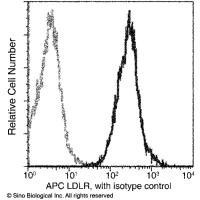Functional Analysis of APC-Cdh1
互联网
676
To maintain genomic integrity against various kinds of genotoxic stress, cells have multiple checkpoints in the cell cycle. When one of the cell cycle events, such as DNA synthesis, DNA repair, and chromosomal segregation, has not been successfully completed, checkpoints will delay progression until the step is correctly accomplished, and only then will they relieve the arrest to allow the cell to move to the next phase. Cells lacking functional checkpoints display genomic aberrations, resulting in the acquisition of phenotypic changes of cancer cells.
Anaphase-promoting complex (APC) is activated by two regulatory proteins: Cdc20 and Cdh1. In yeast and Drosophila , Cdh1-dependent APC (APC-Cdh1) activity targets mitotic cyclins from the end of mitosis to the G1 phase. Loss of Cdh1 induces unscheduled accumulation of mitotic cyclins in G1, resulting in abrogation of G1 arrest caused by treatment with rapamycin, an inducer of p27Kip1 . Furthermore, Cdh1-deficient DT40 cells fail to maintain DNA damage-induced G2 arrest, and Cdh1-APC is activated by X-irradiation-induced DNA damage. Thus, activation of Cdh1-APC plays a crucial role in both cdk inhibitor-dependent G1 arrest and DNA damage-induced G2 arrest.
In light of the differences between normal and cancer cells, checkpoints can be ideal targets for developmental cancer therapeutics. In this chapter, we describe how to analyze three checkpoints (spindle assembly checkpoint, rapamycin-induced G1 checkpoint, and DNA damage-induced G2 checkpoint) in conjunction with cell synchronization.









